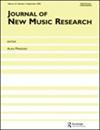基于自适应网络的模糊音乐情感识别
IF 0.9
4区 计算机科学
Q4 COMPUTER SCIENCE, INTERDISCIPLINARY APPLICATIONS
引用次数: 2
摘要
本研究旨在通过基于自适应网络的模糊(ANFIS)来识别音乐中的情绪。为此,我们在877个MP3文件中应用了这种结构,每个文件的持续时间为30秒,这些文件直接在YouTube平台上收集,代表了愤怒、恐惧、幸福、悲伤和惊讶的情绪。我们开发了四种分类策略,由五种、四种、三种和两种情绪组成。结果被认为是有希望的,尤其是对三种和两种情绪,其愤怒、快乐和悲伤的最高命中率为65.83%,愤怒和悲伤的命中率为88.75%。当恐惧和快乐情绪处于同一组时,观察到命中率降低,这提出了一种假设,即只有音频内容不足以区分这些情绪。基于这些结果,我们确定了ANFIS框架在解决不确定性和主观性问题方面的应用潜力。本文章由计算机程序翻译,如有差异,请以英文原文为准。
Recognition of emotions in music through the Adaptive-Network-Based Fuzzy (ANFIS)
This study aims to recognise emotions in music through the Adaptive-Network-Based Fuzzy (ANFIS). For this, we applied such structure in 877 MP3 files with thirty seconds duration each, collected directly on the YouTube platform, which represent the emotions anger, fear, happiness, sadness, and surprise. We developed four classification strategies, consisting of sets of five, four, three, and two emotions. The results were considered promising, especially for three and two emotions, whose highest hit rates were 65.83% for anger, happiness and sadness, and 88.75% for anger and sadness. A reduction in the hit rate was observed when the emotions fear and happiness were in the same set, raising the hypothesis that only the audio content is not enough to distinguish between these emotions. Based on the results, we identified potential in the application of the ANFIS framework for problems with uncertainty and subjectivity.
求助全文
通过发布文献求助,成功后即可免费获取论文全文。
去求助
来源期刊

Journal of New Music Research
工程技术-计算机:跨学科应用
CiteScore
3.20
自引率
0.00%
发文量
5
审稿时长
>12 weeks
期刊介绍:
The Journal of New Music Research (JNMR) publishes material which increases our understanding of music and musical processes by systematic, scientific and technological means. Research published in the journal is innovative, empirically grounded and often, but not exclusively, uses quantitative methods. Articles are both musically relevant and scientifically rigorous, giving full technical details. No bounds are placed on the music or musical behaviours at issue: popular music, music of diverse cultures and the canon of western classical music are all within the Journal’s scope. Articles deal with theory, analysis, composition, performance, uses of music, instruments and other music technologies. The Journal was founded in 1972 with the original title Interface to reflect its interdisciplinary nature, drawing on musicology (including music theory), computer science, psychology, acoustics, philosophy, and other disciplines.
 求助内容:
求助内容: 应助结果提醒方式:
应助结果提醒方式:


